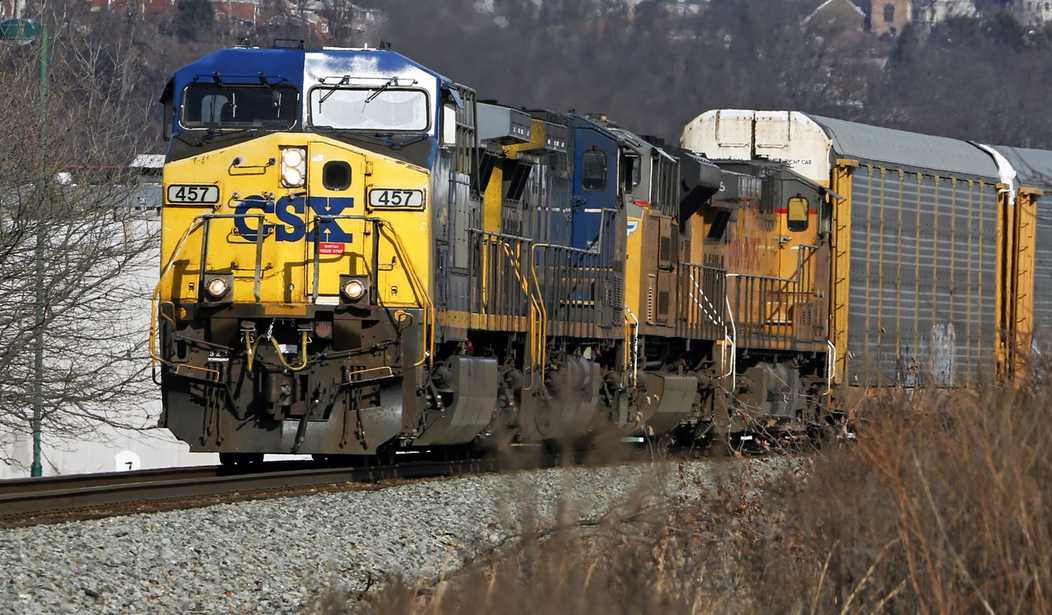In a typical year, freight trains in the United States move about 1.7 billion tons on over 140,000 miles of track. The massive tonnage hauled by freight rail every year means that most American consumers own goods transported on freight trains. Yet, despite the importance of freight rail to American consumers and the broader economy, the Biden administration has proposed several potential changes that could undermine the profitability of freight rail companies and enhance government control of the industry.
Given the importance of freight rail, any government intervention could have catastrophic effects for consumers. Policymakers only need to look at the history of freight rail in the United States to understand why increasing government control of freight rail could be profoundly damaging.
Criticism of the freight rail industry centers around the allegation that track owners overcharge other carriers to use their track and that the industry has undergone significant consolidation since 1980. Following these critics, President Joe Biden announced an executive order demanding that the Surface Transportation Board (STB) increase competition among freight rail companies. Most notably, Biden wants to ensure passenger trains have the right of way, encourage reciprocal switching, which would allow other carriers access to private track, and further scrutiny of mergers and acquisitions in the industry.
Unfortunately, the demands outlined in Biden’s executive order could be profoundly harmful to the freight industry, leading to a loss of consumer welfare and a loss of investment that has helped keep the industry afloat in the face of competition from other modes of transport.
Before deregulation and the passage of the Staggers Rail Act of 1980, America’s rail freight network was in freefall. After decades of onerous regulations, including rate regulation and inflexible labor laws, most major freight railroads faced bankruptcy due to low volumes, low productivity, and almost non-existent revenues. Simply put, onerous government regulations made it almost impossible for rail freight to operate in the United States.
Recommended
Since the deregulation in 1976, the freight rail industry has seen substantial investments that have allowed it to innovate and provide consumers better service. Before 1976, freight rail companies were subject to stringent price controls, which limited their ability to reinvest in rolling stock, infrastructure, and maintenance. It’s estimated that because of price controls, “the average return on investment was 1.2 percent, ”leading to over $4 billion in deferred maintenance and delayed capital spending.”
Deregulation, including the Staggers Rail Act of 1980, which eliminated price controls on large freight rail carriers, has allowed rail companies to invest “approximately $740 billion” of “their funds…on capital expenditures and maintenance expenses.” As a result, today, almost all major freight carriers earn a high enough return on investment, in some cases as much as 15%, to continue investing in their services and innovating.
This significant level of investment has not only allowed freight companies to provide better services to their consumers, but it has also allowed them to create environmentally friendly rolling stock and develop better safety technology. Returning to burdensome government regulations would undoubtedly see these investments evaporate as operational costs increase and revenue declines.
The significant investments by private rail freight companies occurred despite a drop in prices after deregulation. According to the Association of American Railroads, rates dropped approximately 44 percent since 1981. In the immediate aftermath of deregulation, it cost around 8 cents per ton-mile. In 2003, that fell to almost 3 cents per ton-mile before climbing to approximately 4.5 cents in 2019.
Given that transport costs often make up a large portion of business costs, low per ton-mile fees ultimately result in lower prices for consumers. Conversely, returning to stringent regulations could ultimately see the per ton-mile fee rise and be passed onto consumers in the form of higher prices for goods as the cost of transporting goods across the country increases.
Understanding that prices declined and investments increased in the aftermath of freight rail deregulation, policymakers should be keenly aware of the dangers of reimposing burdensome regulations on rail freight in the United States. Given the significant number of goods that are moved on freight trains every day, increased regulations could harm a large number of consumers and leave the industry unable to invest and innovate.
Rather than taking the United States back to the 1970s, the Biden administration should focus its efforts on making it easier for rail freight carriers to operate, not harder.
Edward Longe is a Policy Manager at the American Consumer Institute, a nonprofit educational and research organization. For more information about the Institute, visit www.TheAmericanConsumer.org or follow us on Twitter @ConsumerPal.
























Join the conversation as a VIP Member